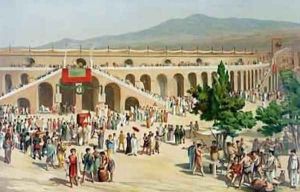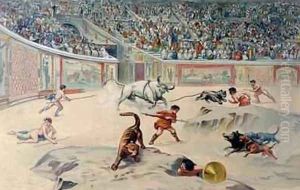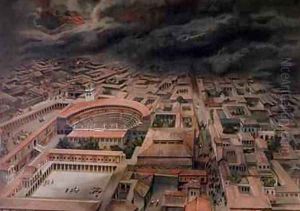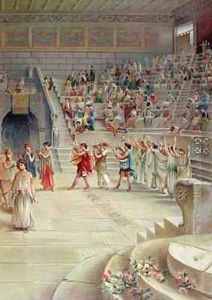Niccolini, Antonio Paintings
Antonio Niccolini was an Italian architect, painter, and scenery designer, predominantly remembered for his contributions to the world of Neoclassical architecture and his work in the city of Naples. Born in 1772 in San Miniato, Tuscany, Niccolini was deeply influenced by the cultural environment of Italy during the late 18th and early 19th centuries, which was marked by a revival of interest in the classical antiquity and the principles of Roman and Greek art and architecture.
Niccolini moved to Naples, which became the primary canvas for his work. He became involved in various architectural projects, including the restoration and redesign of several theaters. His most notable work includes the reconstruction of the Teatro di San Carlo after a fire in 1816. The theater was one of the most important opera houses in Italy, and Niccolini's design reflected the elegance and clarity of the Neoclassical style, emphasizing symmetrical forms and the use of classical elements.
Aside from his architectural endeavors, Niccolini was also known for his work as a painter and a set designer for theaters. He brought his architectural expertise into the realm of theatrical scenery, creating designs that were celebrated for their illusionistic qualities and their ability to enhance the theatrical experience.
Throughout his career, Niccolini contributed to the cultural landscape of Naples and was involved in the intellectual circles of the city. He was a member of various artistic and literary societies, where he exchanged ideas with contemporaries and influenced the artistic direction of Neapolitan culture during his time.
Antonio Niccolini's legacy is closely tied to the Neoclassical movement in Italy. His architectural and artistic works continued to be appreciated for their clear lines, rational design, and adherence to classical beauty. He passed away in 1850, leaving behind a body of work that would inspire future generations of architects and designers.




